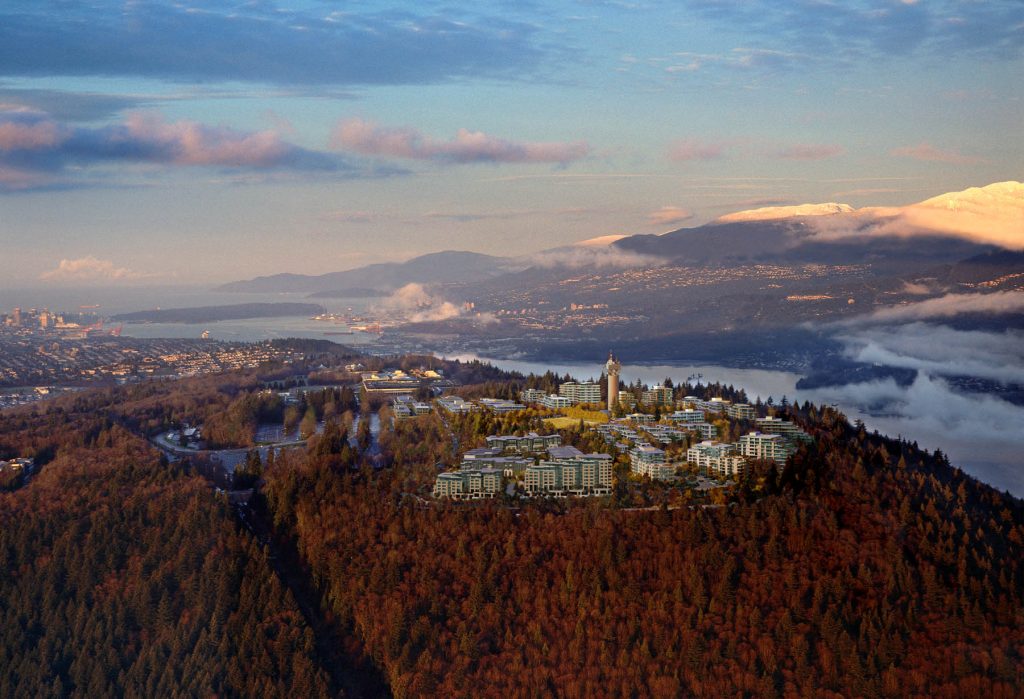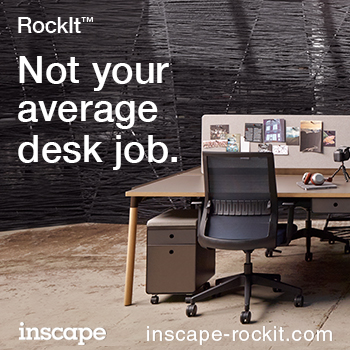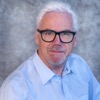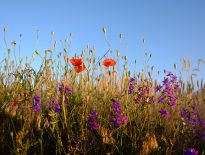[Editor’s note: Gordon Harris is the author of the newest Ecotone Publishing title, Building Community, available now in the Ecotone Bookstore]
Sustainability – the word, the concept, the aspiration – was always deeply embedded in the mythology of our organization: it was everyone’s understanding that SFU Community Trust had been established in the late 1990s with the express purpose of building “a model sustainable community” on Burnaby Mountain, at the heart of Metro Vancouver. From the day I assumed my role at the helm of the Trust in 2006, almost every conversation reflected our sustainability focus. We were constantly pushing ourselves and our development partners, measuring and adjusting our ecological footprint. And now, as our new community, UniverCity, approaches buildout and draws nearer to a final population of almost 10,000, we are proud of our successes, including, for example, a childcare centre that we expect soon to be certified as the first Living Building in Western Canada.
But, having just concluded the research and writing of a book on the project (Building Community: Defining, Designing, Developing UniverCity), I must report that this so-frequently quoted goal – to be a “model sustainable community” – was no part of the Trust’s founding brief. Rather, there were twin imperatives. First, we were to develop a community that would complement and support Simon Fraser University (SFU), Canada’s premiere comprehensive university, but one that was isolated at the top of a rugged and undeveloped mountain. Second, we were to convert the value of an endowment of land surrounding the university into a financial endowment that would support its mission of teaching and research: we were to make money!
If that economic goal was marvellously clear – and easy to track – our ecological ambitions were less so. John Stubbs, who was the SFU president who got the ball rolling in 1995, acknowledges today that the instruction, if well-meaning, was ill-defined. He says, “It was such an amazing site, we wanted to build something as environmentally sensitive as possible.”
Again, we are proud of how well we executed on those directions. We are delighted to have earned significant international acclaim at a time when some of the relevant concepts were in their infancy. But looking back, it would have been easier to achieve our ecological goals if they had been more clearly defined and more readily measurable with instruments such as the International Living Future Institute’s (ILFI) Handprint Guide.
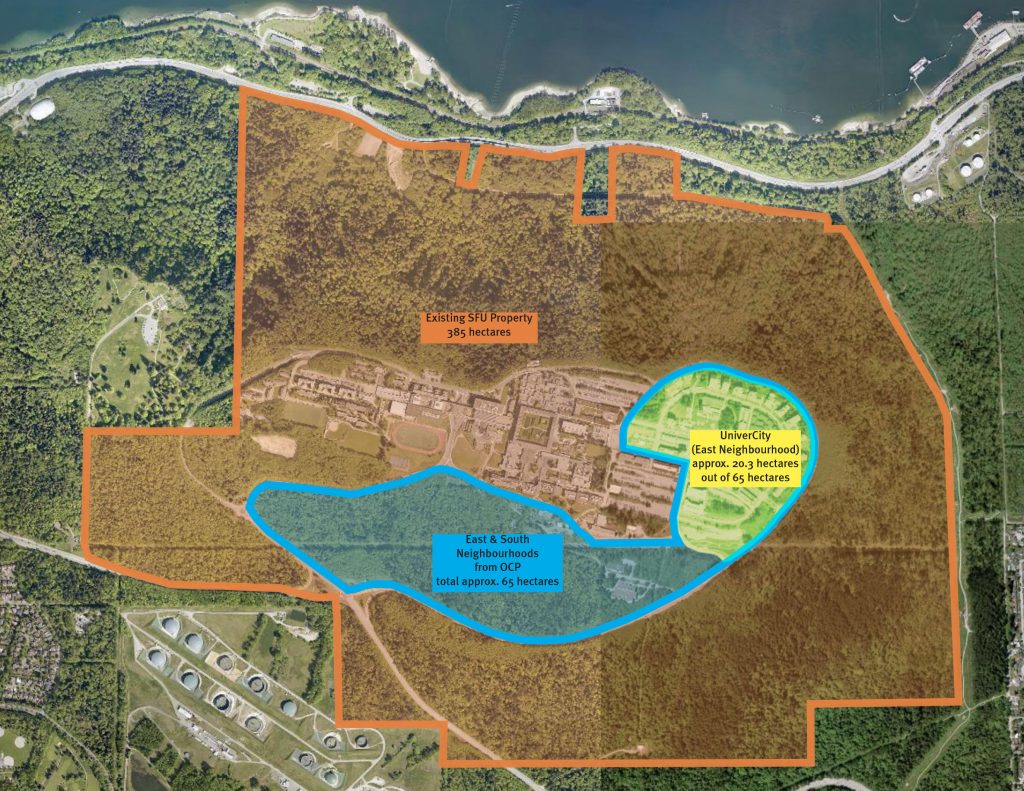
Footprints
The concept of the ecological footprint is so embedded in our consciousness today that it’s easy to forget how new it is. While SFU initiated development of UniverCity in 1995, the people who coined the term ecological footprint, University of British Columbia Prof. Bill Rees and then-graduate student Mathis Wakernagel, didn’t publish the book introducing their new theory until the next year. Of course, even in the absence of language to describe minimizing one’s footprint, many people recognized intuitively that it is the right thing to do. In a most literal example, UniverCity began by making its physical footprint as small as possible. Beginning with 385 hectares (>950 acres) of endowment land, the university donated 320 hectares (790 acres) for permanent preservation in the Burnaby Mountain Conservation Area in return for permission to concentrate all development within the 65 hectares (161 acres) nearest the university campus. Even without a footprint calculator, this was an obvious win/win. We preserved a great swath of wild forestland and wound up with a compact, convenient development parcel – the perfect starting point for a walkable community.
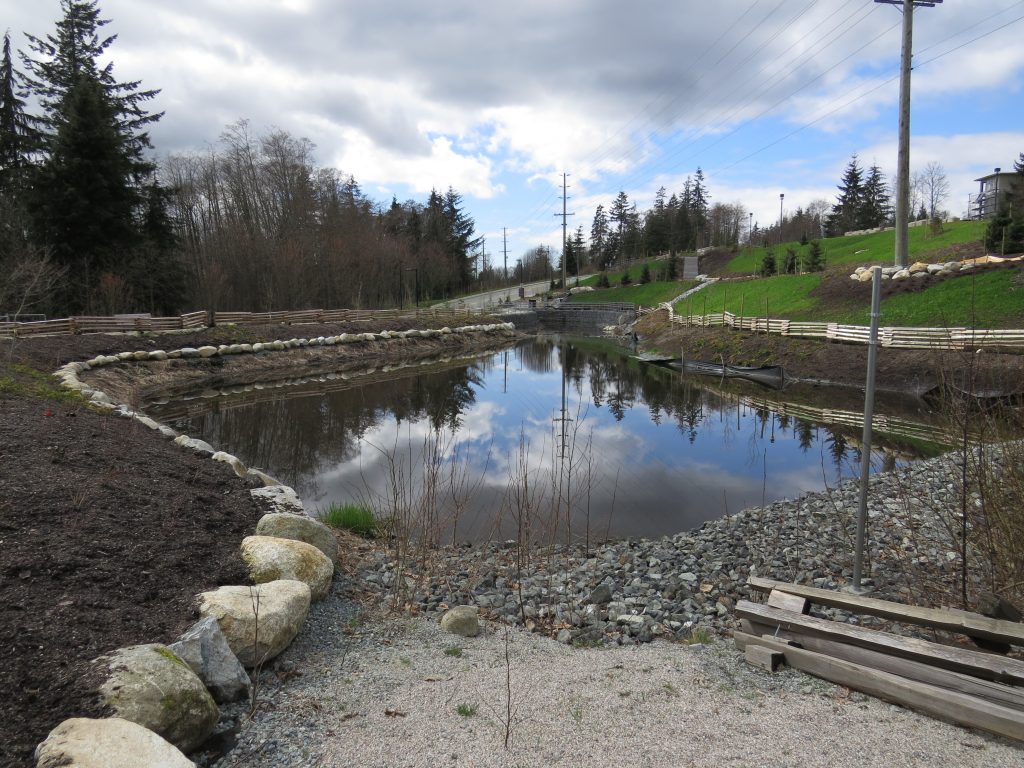
In a more theoretical application of the notion of ecological footprint, SFU Community Trust, which SFU established to plan and manage UniverCity’s development, also looked to the impact of building a complete community in a relatively isolated mountain-top location. One of the most obvious implications was on storm water. Burnaby Mountain gets approximately two metres (six feet) of rain per year, which courses down the slopes into brooks, creeks and tributaries that feed a couple of significant salmon-supporting rivers at the base. We challenged ourselves to build the community in a way that would not disrupt or taint the flow of that life-supporting water. Instead of conventional infrastructure that would capture rainwater and sluice it away in storm sewers, we committed to keeping water flowing, on or near the surface, with bioswales, infiltration galleries and raingardens. We also built biofilters and holding ponds where stormwater would be cleansed of oily toxins that are inclined to wash off the roads in developed locations. By all reports, the salmon still have not noticed that more than 5,000 people have already moved into our community.
Handprints
As with the concept of the footprint, the idea of a handprint gives us language to talk about things that we might have been doing already – but things that we can do more intentionally and strategically in the future. Working from the ILFI definition, if a footprint describes the impact of our presence and actions in the world – what we inevitably subtract from the world’s resources – a handprint refers instead to what we can do that is positive – what we might give. That handprint doesn’t necessarily reduce our personal or corporate footprint; but net/net, it might well lighten the load, even ultimately to the point of break-even.
Applying this new notion to the action of SFU Community Trust in building UniverCity, the most obvious handprint benefits came from our emerging commitment to be a “model” of sustainable practice. Even if it wasn’t part of our opening-day brief, this became part of our corporate culture. We committed not just to developing the most environmentally sensitive community possible, but to do so in a way that others could replicate to good effect. Part of that goal involved breaking through technical, regulatory or other barriers, and part involved publicizing our innovations and advocating for wider incorporation.
In terms of breaking through barriers, we began by demanding a higher voluntary standard for energy and water efficiency from developers working in our community. This had a double benefit of lowering our footprint and exerting a positive handprint. For example, in 2010, we set guidelines that called for all new homes be 30 percent more energy efficient and 40 percent more water efficient than was specified in Canada’s Model National Energy Code for Buildings. Not only did developers accept that challenge, they also claimed a five percent density bonus that we offered to those who exceeded the energy standard by 50 per cent and improved their stormwater management capacities. Many developers also told us that they began applying the lessons learned in achieving these higher standards in other locations, as well. We later worked with the City of Burnaby to build those more-stringent guidelines into a legally mandated Green Building Code, likely the most innovative of its type at the time. And when the Model National Energy Code was revised in 2015, it incorporated our standard as the new baseline.
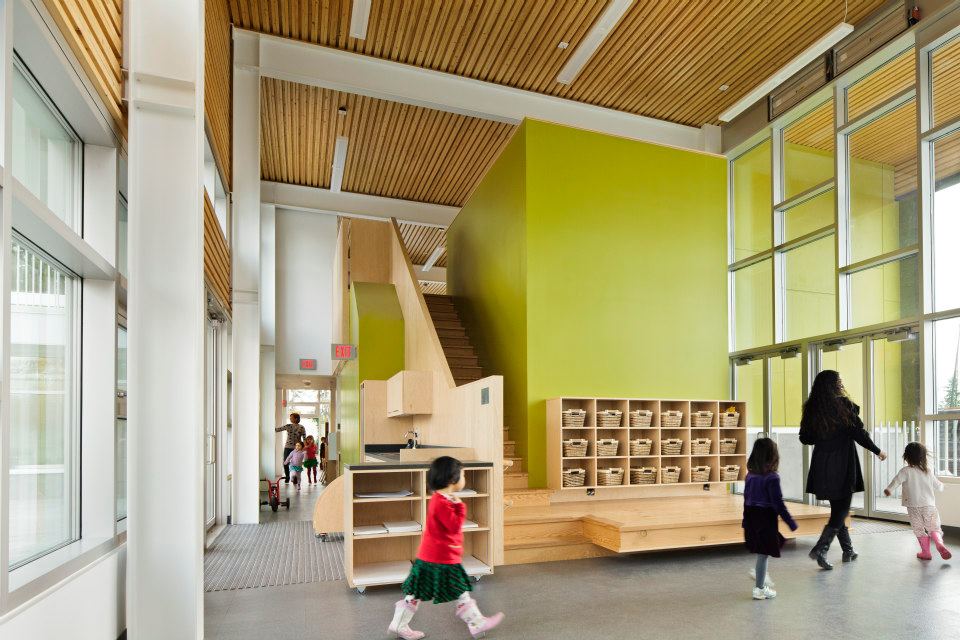 One of our most ambitious projects, both in reducing footprint and demonstrating handprint, has been the construction and operation of the UniverCity Childcare Centre, which ILFI founder Jason F. McLennan has called “the greenest childcare centre on the planet.” Meeting the standards of the Living Building Challenge, the centre generates more energy and harvests or recycles more water than its inhabitants use and it was constructed of non-toxic materials sourced from within 500 kilometres. Virtually every innovation in that centre, from district energy sharing to water recycling and treatment, had to be vetted by a regulator and, in most cases, the regulators resisted. Our persistence paid off, not just for us, but for the next developer who wants to build something that is different – and better – and will now find regulators that are experienced with innovation.
One of our most ambitious projects, both in reducing footprint and demonstrating handprint, has been the construction and operation of the UniverCity Childcare Centre, which ILFI founder Jason F. McLennan has called “the greenest childcare centre on the planet.” Meeting the standards of the Living Building Challenge, the centre generates more energy and harvests or recycles more water than its inhabitants use and it was constructed of non-toxic materials sourced from within 500 kilometres. Virtually every innovation in that centre, from district energy sharing to water recycling and treatment, had to be vetted by a regulator and, in most cases, the regulators resisted. Our persistence paid off, not just for us, but for the next developer who wants to build something that is different – and better – and will now find regulators that are experienced with innovation.
As developers of a complete community, the Trust also succeeded in breaking through barriers because we had an interim obligation to manage most of our own municipal infrastructure and to demonstrate its safety and effectiveness before ultimately passing it along to the City of Burnaby. For that reason, the City was more willing to allow us to create things like the narrowest new road right-of-way in the country, because we were in a position to demonstrate its safe operation. And because we are associated with SFU, a major public institution, the City also knew that, if any of our innovations failed, they would be able to compel us to repair, revise or completely redo the relevant infrastructure before turning it over (although no such revision has proved necessary).
UniverCity’s biggest handprint, however, arises in fulfilment of our initial imperative: to create a community that complements and supports the function of Simon Fraser University. Once again, this was an isolated, commuter-only campus – a daytime community of nearly 30,000 people that emptied almost entirely on evenings and weekends. Students in residence who wanted a snack after the cafeteria closed had little choice but to climb onto a bus for a round-trip to an off-mountain grocery store that would have taken between one and two hours. Now, there is a full selection of shops and services within a 10-minute walk, including a grocery store, a liquor store and a variety of cafes and restaurants. And more than half the people who now live on the mountain work, teach, or study at the university, again, within a 10-minute walk of their door. It has improved quality of life all around.
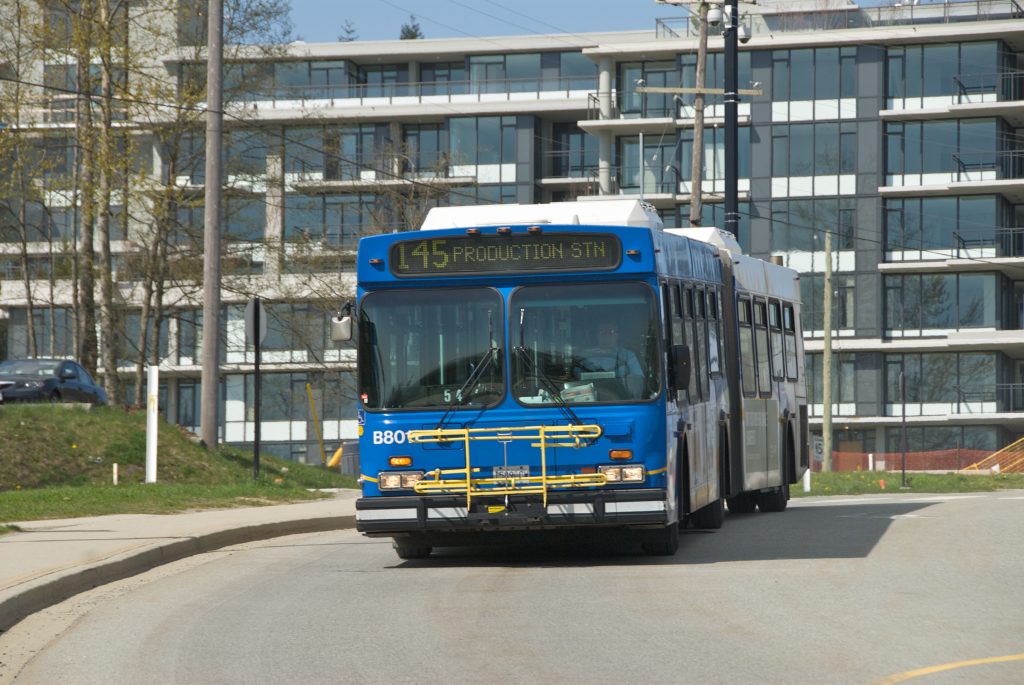 The Trust has also built more than $15 million in infrastructure that serves the university, such as a major redundant water line that could be crucial in times of emergency. Further, we also take better advantage of infrastructure that was already in place: for example, before the construction of UniverCity, SFU was the second-busiest transit destination in the region, but the buses that brought students, staff and faculty in the morning and took them away in the evening ran empty in the other direction. Now, the residents of our community have access to excellent bus service to virtually every part of the region, and those buses are used more efficiently morning and night. The next innovation will be even better: we are close to concluding an agreement to build an electric transit gondola that will replace dozens of buses, reduce travel time up and down the mountain by half, lower transportation related carbon emissions by more than 70 percent and run more reliably. (Snowstorms currently defeat the bus service on an average 12 days a year.)
The Trust has also built more than $15 million in infrastructure that serves the university, such as a major redundant water line that could be crucial in times of emergency. Further, we also take better advantage of infrastructure that was already in place: for example, before the construction of UniverCity, SFU was the second-busiest transit destination in the region, but the buses that brought students, staff and faculty in the morning and took them away in the evening ran empty in the other direction. Now, the residents of our community have access to excellent bus service to virtually every part of the region, and those buses are used more efficiently morning and night. The next innovation will be even better: we are close to concluding an agreement to build an electric transit gondola that will replace dozens of buses, reduce travel time up and down the mountain by half, lower transportation related carbon emissions by more than 70 percent and run more reliably. (Snowstorms currently defeat the bus service on an average 12 days a year.)
But the lesson that we learned best from building the childcare centre and working toward Living Building certification is that you can’t really understand the full scope or your impact – of your footprint or your handprints – unless you track and record the details. When you do, you soon learn which innovations are worth the effort and which ones didn’t deliver, no matter how great they looked on paper. As we wrap up the final few years of development between now and the early 2020s, the Trust will be tracking our impact even more closely, to better assess the impact of our footprint, including how to lighten the load, and our handprint, including how to lift the load elsewhere, by our example or our own interventions.

